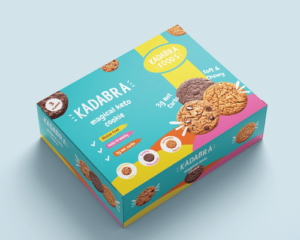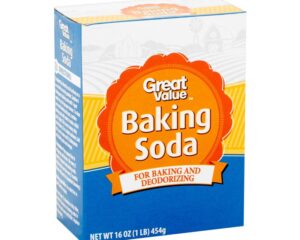Packaging design is a critical component of any product’s success. It not only protects the product but also acts as a powerful marketing tool that can capture a customer’s attention. However, achieving the perfect packaging design is often riddled with challenges. Whether you’re launching a new product or rebranding an existing one, navigating these hurdles can make or break your product’s appeal in the market. In this article, we’ll dive into the eight major packaging design challenges and provide practical solutions to overcome them.
1. Balancing Aesthetics with Functionality
The most common challenge in packaging design is finding the balance between creating something visually appealing and ensuring that it functions as intended. Consumers are drawn to packaging that looks good on the shelf, but aesthetics alone won’t cut it if the packaging is hard to open, fragile, or fails to protect the product adequately.
How to Overcome:
- Focus on Product Needs: Before diving into aesthetics, ensure the package fulfills its primary purpose—protecting the product. Consider factors such as shelf life, fragility, and environmental conditions.
- Material Selection: Choose materials that offer both strength and design flexibility. For example, corrugated cardboard can be a good choice for sturdiness and creative printing options.
- Design Prototyping: Create prototypes and run functionality tests before finalizing the design. Prototypes allow you to make adjustments and ensure your packaging meets practical requirements.
2. Sustainability Pressure
With growing concerns around environmental impact, there’s mounting pressure on businesses to adopt sustainable packaging. Consumers and regulators are demanding eco-friendly materials and processes, but integrating sustainability without compromising the design or budget can be challenging.
How to Overcome:
- Use Recycled Materials: Incorporate materials that are biodegradable or recyclable. Paperboard, biodegradable plastics, and plant-based polymers are popular choices.
- Minimize Packaging Waste: Opt for minimalistic designs that reduce waste and unnecessary use of materials. For instance, avoid excessive layers of plastic or cardboard.
- Educate Consumers: Add instructions on the packaging about how to recycle or dispose of it responsibly. This not only helps the environment but also enhances your brand’s image as environmentally conscious.
3. Budget Constraints
Budget is often one of the biggest constraints in packaging design. Businesses want premium, high-quality packaging but may not have the financial resources to support elaborate designs or expensive materials. The challenge is to design packaging that looks premium without the hefty price tag.
How to Overcome:
- Smart Material Choices: Instead of opting for high-end materials, consider cost-effective alternatives that still offer a premium feel. For example, paperboard can be an affordable option with the right print finish.
- Efficient Design: Use design elements that require fewer printing resources. Monochromatic designs, simple logos, and minimal text can create an elegant look without incurring extra costs.
- Partner with Packaging Experts: Working with packaging suppliers who specialize in cost-effective solutions can help you stay within budget while achieving high design standards.
4. Complexity in Customization
With the rise of e-commerce and a global market, packaging often needs to be customized for different regions, languages, and product lines. Managing these variations without increasing costs or complexity is a significant challenge for companies.
How to Overcome:
- Modular Packaging Design: Develop a modular system where the core design stays the same across regions, but small elements such as language, promotional messages, or region-specific details can be adapted.
- Digital Printing: Leverage digital printing technologies, which allow for short runs of customized packaging without the high costs of traditional printing methods.
- Collaborate with Local Experts: Partner with packaging specialists in different regions who understand the local market and regulatory requirements. They can guide you on how to customize packaging without costly missteps.
5. Regulatory Compliance
Packaging must comply with various regulations depending on the region and industry. These regulations may pertain to safety standards, labeling requirements, or environmental laws. Non-compliance can lead to hefty fines, delays in product launches, and reputational damage.
How to Overcome:
- Stay Informed: Keep up with the latest regulations in the regions where your product is being sold. Consult regulatory agencies and ensure that your packaging is up to standard.
- Labeling Accuracy: Make sure all necessary information—such as ingredients, allergens, expiration dates, and safety warnings—are accurately displayed on the packaging.
- Collaborate with Legal Teams: Involve your legal and compliance teams early in the design process to ensure that your packaging meets all necessary regulatory standards.
6. Maintaining Brand Consistency
As brands expand into new markets or introduce new product lines, maintaining consistency in packaging design becomes a challenge. It’s essential to ensure that your packaging aligns with your brand’s core identity while adapting to market trends and consumer preferences.
How to Overcome:
- Develop Brand Guidelines: Create a set of packaging guidelines that detail the use of colors, logos, fonts, and other visual elements. This ensures that all packaging stays consistent with the brand’s identity.
- Centralize Packaging Design: Use a centralized system for designing and approving packaging. This ensures that all packaging meets the same standards and prevents inconsistent designs from entering the market.
- Audit Regularly: Conduct regular audits of your packaging to ensure consistency across all product lines and regions. This will help identify discrepancies early and maintain brand integrity.
7. Consumer Interaction and Engagement
Packaging isn’t just about protecting the product—it’s often the first point of interaction between a consumer and your brand. Creating packaging that is engaging, interactive, and memorable can enhance customer satisfaction and increase brand loyalty. However, standing out in a saturated market can be tough.
How to Overcome:
- Interactive Packaging: Add QR codes or Augmented Reality (AR) features to your packaging. These interactive elements allow customers to learn more about the product or access special promotions by simply scanning the code.
- Tactile Design Elements: Incorporate tactile elements such as embossing, matte finishes, or soft-touch coatings. These textures enhance the sensory experience and leave a lasting impression.
- Storytelling Through Packaging: Use the packaging to tell your brand story or explain your product’s unique value proposition. Consumers are more likely to remember and engage with packaging that connects on a personal level.
8. Managing Logistics and Supply Chain Constraints
The packaging design must also take into account logistical considerations, such as shipping, storage, and handling. Packaging that looks good on the shelf but isn’t optimized for transportation can lead to damaged products, increased costs, and inefficiencies in the supply chain.
How to Overcome:
- Design for Durability: Choose materials and designs that can withstand the rigors of shipping. Consider factors such as stacking strength, water resistance, and shock absorption.
- Size Optimization: Create packaging that fits the product snugly without wasting space. Optimizing the size of your packaging can reduce shipping costs and minimize environmental impact.
- Work Closely with Suppliers: Collaborate with logistics and supply chain experts to ensure that your packaging design is efficient for transportation and storage. This helps avoid costly redesigns after production has already begun.
Conclusion
Packaging design is a complex process, filled with various challenges that impact everything from brand perception to supply chain efficiency. By identifying these eight common packaging design challenges—balancing aesthetics and functionality, sustainability, budget constraints, customization, regulatory compliance, brand consistency, consumer engagement, and logistics—you can proactively work towards solutions that enhance both the practicality and appeal of your packaging.
At Packwhole, we understand the importance of addressing these challenges head-on. Whether you’re a small startup or an established brand, our team of experts is ready to help you create packaging that not only looks great but also functions flawlessly. Let us help you overcome your packaging design challenges, and ensure that your product stands out on the shelf and performs efficiently throughout its lifecycle.







